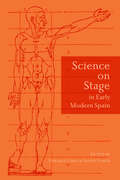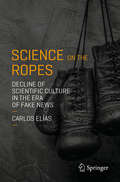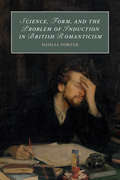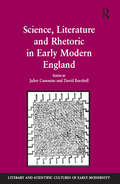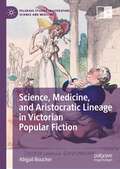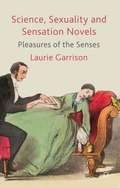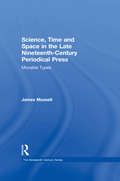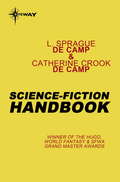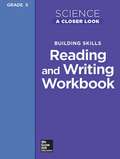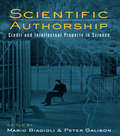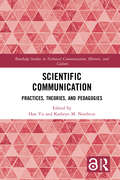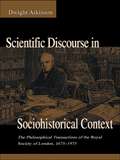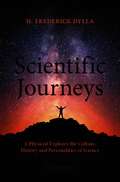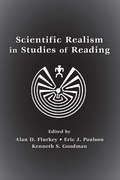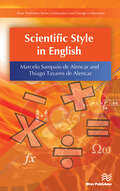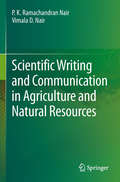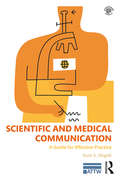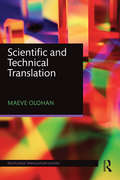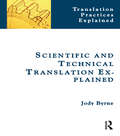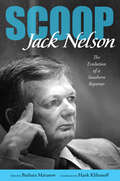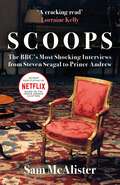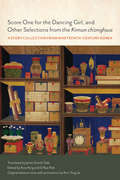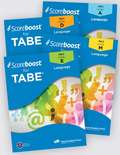- Table View
- List View
Science on Stage in Early Modern Spain (Toronto Iberic)
by Enrique Garcia Santo-TomasScience on Stage in Early Modern Spain features essays by leading scholars in the fields of literary studies and the history of science, exploring the relationship between technical innovations and theatrical events that incorporated scientific content into dramatic productions. Focusing on Spanish dramas between 1500 and 1700, through the birth and development of its playhouses and coliseums and the phenomenal success of its major writers, this collection addresses a unique phenomenon through the most popular, versatile, and generous medium of the time. The contributors tackle subjects and disciplines as diverse as alchemy, optics, astronomy, acoustics, geometry, mechanics, and mathematics to reveal how theatre could be used to deploy scientific knowledge. While Science on Stage contributes to cultural and performance studies it also engages with issues of censorship, the effect of the Spanish Inquisition on the circulation of ideas, and the influence of the Eastern traditions in Spain.
Science on the Ropes: Decline of Scientific Culture in the Era of Fake News
by Carlos ElíasIn this controversial essay, Carlos Elías addresses the worldwide phenomenon that is threatening the scientific and economic progress of Western countries. The rise and influence of magic and irrationality in the media, in social networks and at universities is a disturbing phenomenon: many Western students no longer want to pursue STEM (Science, Technologies, Engineering, and Math) careers. This lucid and well-written book addresses one of the key issues of public debate: the deteriorating state of science in Western countries and their governments, and its rise in Asian countries. The author compares two distinct models: the Spanish or Latin model, which closed the door on science with the Counter-Reformation, and that employed by a second group of countries where science was encouraged. Elías suggests that a similar development could now be taking place between Western countries (where the press, television and social science academics are becoming increasingly critical towards science) and Asia, where most prime ministers (and other politicians) are scientists or engineers. This book is intended for STEM educators (both at secondary schools and universities), scientists and academics interested in scientific culture in the era of fake news.
Science v. Story: Narrative Strategies for Science Communicators
by Emma Frances BloomfieldUncovering common threads across types of science skepticism to show why these controversial narratives stick and how we can more effectively counter them through storytelling Science v. Story analyzes four scientific controversies—climate change, evolution, vaccination, and COVID-19—through the lens of storytelling. Instead of viewing stories as adversaries to scientific practices, Emma Frances Bloomfield demonstrates how storytelling is integral to science communication. Drawing from narrative theory and rhetorical studies, Science v. Story examines scientific stories and rival stories, including disingenuous rival stories that undermine scientific conclusions and productive rival stories that work to make science more inclusive. Science v. Story offers two tools to evaluate and build stories: narrative webs and narrative constellations. These visual mapping tools chart the features of a story (i.e., characters, action, sequence, scope, storyteller, and content) to locate opportunities for audience engagement. Bloomfield ultimately argues that we can strengthen science communication by incorporating storytelling in critical ways that are attentive to audience and context.
Science, Form, and the Problem of Induction in British Romanticism (Cambridge Studies in Romanticism #120)
by Dahlia PorterExploring a topic at the intersection of science, philosophy and literature in the late eighteenth century Dahlia Porter traces the history of induction as a writerly practice - as a procedure for manipulating textual evidence by selective quotation - from its roots in Francis Bacon's experimental philosophy to its pervasiveness across Enlightenment moral philosophy, aesthetics, literary criticism, and literature itself. Porter brings this history to bear on an omnipresent feature of Romantic-era literature, its mixtures of verse and prose. Combining analyses of printed books and manuscripts with recent scholarship in the history of science, she elucidates the compositional practices and formal dilemmas of Erasmus Darwin, Robert Southey, Charlotte Smith, Maria Edgeworth, and Samuel Taylor Coleridge. In doing so she re-examines the relationship between Romantic literature and eighteenth-century empiricist science, philosophy, and forms of art and explores how Romantic writers engaged with the ideas of Enlightenment empiricism in their work.
Science, Literature and Rhetoric in Early Modern England (Literary and Scientific Cultures of Early Modernity)
by David BurchellThese essays throw new light on the complex relations between science, literature and rhetoric as avenues to discovery in the seventeenth and eighteenth centuries. Scholars from a variety of disciplinary backgrounds examine the agency of early modern poets, playwrights, essayists, philosophers, natural philosophers and artists in remaking their culture and reforming ideas about human understanding. Analyzing the ways in which the works of such diverse writers as Shakespeare, Bacon, Hobbes, Milton, Cavendish, Boyle, Pope and Behn related to contemporary epistemological debates, these essays move us toward a better understanding of interactions between the sciences and the humanities during a seminal phase in the emergence of modern Western thought.
Science, Medicine, and Aristocratic Lineage in Victorian Popular Fiction (Palgrave Studies in Literature, Science and Medicine)
by Abigail BoucherScience, Medicine, and Lineage in Popular Fiction of the Long Nineteenth Century explores the dialogue between popular literature and medical and scientific discourse in terms of how they represent the highly visible an pathologized British aristocratic body. This books explores and complicates the two major portrayals of aristocrats in nineteenth-century literature: that of the medicalised, frail, debauched, and diseased aristocrat, and that of the heroic, active, beautiful ‘noble’, both of which are frequent and resonant in popular fiction of the long nineteenth century. Abigail Boucher argues that the concept of class in the long nineteenth century implicitly includes notions of blood, lineage, and bodily ‘correctness’, and that ‘class’ was therefore frequently portrayed as an empirical, scientific, and medical certainty. Due to their elevated and highly visual social positions, both historical and fictional aristocrats were frequently pathologized in the public mind and watched for signs of physical excellence or deviance. Using popular fiction, Boucher establishes patterns across decades, genres, and demographics and considers how these patterns react to, normalise, or feed into the advent of new scientific and medical understandings.
Science, Sexuality and Sensation Novels
by Laurie GarrisonThis fascinating new book offers a detailed account of the prolific debate about the sensation novel and considers the genre's dialogues with a number of sciences. Well-known and obscure sensation novels are read against this context in order to recover the forgotten history of sensual reading the genre inspired.
Science, Time and Space in the Late Nineteenth-Century Periodical Press: Movable Types (The Nineteenth Century Series)
by James MussellJames Mussell reads nineteenth-century scientific debates in light of recent theoretical discussions of scientific writing to propose a new methodology for understanding the periodical press in terms of its movements in time and space. That there is no disjunction between text and object is already recognized in science studies, Mussell argues; however, this principle should also be extended to our understanding of print culture within its cultural context. He provides historical accounts of scientific controversy, documents references to time and space in the periodical press, and follows magazines and journals as they circulate through society to shed new light on the dissemination and distribution of periodicals, authorship and textual authority, and the role of mediation in material culture. Well-known writers like H. G. Wells and Arthur Conan Doyle are discovered in new contexts, while other authors, publishers, editors, and scientists are discussed for the first time. Mussell is persuasive in showing how his methodology increases our understanding of the process of transformation and translation that underpins the production of print and informs current debates about the status of digital publication and the preservation of archival material in electronic forms. Adding to the book's usefulness are an extended bibliography and a discussion of recent debates regarding digital publication.
Science-Fiction Handbook
by L. Sprague deCamp Catherine Crook deCampCopy from the 1975 Owlswick Press print edition:L. Sprague de Camp's original Science-Fiction Handbook, published in 1953 and long out of print, has been favourably remembered by a whole generation of science fiction readers and aspiring writers. Over the years, at convention after convention, fans have urged its reissue. Teachers of courses on imaginative fiction have begged for the book; one planned to reproduce the manual for his creative writing course until he learned that the material was under copyright Because of this enduring interest, the present book came into being.Completely rewritten by de Camp and his wife Catherine, Science Fiction Handbook, Revised serves two purposes. It introduces the general reader to the fascinating field of imaginative fiction. The first two chapters describe the growth of science fiction from Aristophanes to Asimov and give the history of its parent literature, fantasy, which is as old as cavemen and as young as tomorrow.The rest of the book affords the apprentice writer an overview of the pleasures and problems of writing imaginative fiction an teachers him the many and varied skills such writing requires. There are chapters on setting the scene, plotting the story and writing dialogue. Other chapters are devoted to showing the creative writer how to sore his literary works, keep records for tax purposes, market a story, deal with editors and agents, read the fine print in contracts and bargain with publishers. Finally, there are helpful hints for the successful writer about relating to his community, handling publicity and melding the needs of the creative artists with those of a successful human being and family member.In short, here is a wealth of information on the techniques of writing fiction. Here, too, is the wisdom distilled by the de Camps in the course of their long writing careers. And, for those who have no desire to write, here is a chance to see what the writer's world is really like and to learn something about the remarkable literature that we call science fiction and fantasy.
Science: A Closer Look [Grade 5], Building Skills, Reading and Writing Workbook
by MacmillanA 5th grade science workbook that accompanies the textbook "Science a closer look" grade 5
Scientific Authorship: Credit and Intellectual Property in Science
by Mario Biagioli Peter GalisonFirst Published in 2003. Routledge is an imprint of Taylor & Francis, an informa company.
Scientific Communication: Practices, Theories, and Pedagogies (Routledge Studies in Technical Communication, Rhetoric, and Culture)
by Han Yu Kathryn M. NorthcutThis book addresses the roles and challenges of people who communicate science, who work with scientists, and who teach STEM majors how to write. In terms of practice and theory, chapters address themes encountered by scientists and communicators, including ethical challenges, visual displays, and communication with publics, as well as changed and changing contexts and genres. The pedagogy section covers topics important to instructors’ everyday teaching as well as longer-term curricular development. Chapters address delivery of rhetorically informed instruction, communication from experts to the publics, writing assessment, online teaching, and communication-intensive pedagogies and curricula.
Scientific Discourse in Sociohistorical Context: The Philosophical Transactions of the Royal Society of London, 1675-1975 (Rhetoric, Knowledge, and Society Series)
by Dwight AtkinsonScientific Discourse in Sociohistorical Context represents the intersection of knowledge and method, examined from the perspective of three distinct disciplines: linguistics, rhetoric-composition, and history. Herein, Dwight Atkinson describes the written language and rhetoric of the Royal Society of London, based on his analysis of its affiliated journal, The Philosophical Transactions, starting with the 17th century advent of modern empirical science through to the present day. Atkinson adopts two independent approaches to the analysis of written discourse--from the fields of linguistics and rhetoric-composition--and then integrates and interprets his findings in light of the history of the Royal Society and British science. Atkinson's study provides the most complete and particular institutional account of a scientific journal, which in this case is a publication that stands as an icon of scientific publication. He supplies his readers with important material found nowhere else in the historical literature, including details about the operation of the journal and its relation to the society. The work embeds the history of the journal and its editors within the history of the Royal Society and other developments in science and society. The synthesis of historical, linguistic, rhetorical, and cultural analysis makes visible certain complex communicative dynamics that could not previously be seen from a single vantage point. The work presented here reinforces how deep historical examinations of linguistic and rhetorical practices have direct bearing on how and what scholars read and write now. Most significantly, this volume demonstrates how these historical activities need to inform current teaching of and thinking about language.
Scientific Journeys: A Physicist Explores the Culture, History and Personalities of Science
by H. Frederick DyllaThis collection of essays traces a scientific journey bookmarked by remarkable mentors and milestones of science. It provides fascinating reading for everyone interested in the history, public appreciation, and value of science, as well as giving first-hand accounts of many key events and prominent figures. The author was one of the “sputnik kids” growing up in the US at the start of the space age. He built a working laser just two years after they were first invented, an experience that convinced him to become a physicist. During his 50-year career in physics, many personalities and notable events in science and technology helped to form his view of how science contributes to the modern world, including his conviction that the impact of science can be most effective when introduced within the context of the humanities - especially history, literature and the arts.From the Foreword by former U.S. Congressman, Rush D. Holt: In this volume, we have the wide-ranging thoughts and observations of Fred Dylla, an accomplished physicist with an engineer’s fascination for gadgets, a historian’s long perspective, an artist’s aesthetic eye, and a teacher’s passion for sharing ideas. Throughout his varied career [...] his curiosity has been his foremost characteristic and his ability to see the connection between apparently disparate things his greatest skill. [...] Here he examines the roots and growth of innovation in examples from Bell Laboratories, Edison Electric Light Company, and cubist painter Georges Braque. He considers the essential place of publishing in science, that epochal intellectual technique for learning how the world works. He shows the human enrichment and practical benefits that derive from wise investments in scientific research, as well as the waste resulting from a failure to embrace appropriate technologies.
Scientific Realism in Studies of Reading
by Alan D. Flurkey, Eric J. Paulson and Kenneth S. GoodmanThis book provides research-based insights that deepen and broaden current understandings of the nature of reading. Informed by psycholinguistic and sociolinguistic views of reading-as-meaning-construction, the studies build on principles of scientific realism – an approach to inquiry that incorporates and values a wide variety of methods of observation to find the most inclusive, ecologically valid description of the reading process as it is observed in a variety of contexts from a wide range of perspectives. Focusing on how facts are discovered, developed, and used in the construction of knowledge about reading – a data-driven and theory-driven construction that results from observing the reading process with a variety of tools, methods, disciplines, and conceptual frameworks – scientific realism goes beyond rationalism and experimentation to include studies of events and experiences, but still satisfies even the most narrow definitions of what state and national lawmakers refer to as "reliable and replicable research on reading." Each study in this volume breaks ground for a new line of reading research underpinned by the theory of reading based in scientific realism. Scientific Realism in Studies of Reading is directed to reading researchers, teacher educators, reading specialists, special educators, graduate students, and related education professionals in the disciplines of applied psycholinguistics and sociolinguistics, and is appropriate as a text for advanced courses in these areas.
Scientific Style in English (River Publishers Series In Innovation And Change In Education Ser.)
by Marcelo Sampaio Alencar Thiago Tavares AlencarStyle is a distinctive manner of expression, in writing or speech. The wordevolved from Latin stilus, an instrument for writing, marking, or incising,such as something used by the ancients in writing on clay or waxed tablets.It is the way in which something is said or done, as distinguished fromits substance. Style is also a convention with respect to spelling, punctuation,capitalization, and typographic arrangement and display followed in writingor printing.Scientific Style in English aims to help students with the reading and writing of scientific and technical texts in English, with a particular focus on style, grammar and math. It can be used by students and professionals with basic or intermediate understanding of theEnglish language.Technical topics discussed in the book include: Scientific Style in English Mathematical Style in English Technical Style Stylistic Problems in English How to write Theses and Dissertations
Scientific Writing and Communication in Agriculture and Natural Resources
by P.K. Ramachandran Nair Vimala D. NairThe purpose of this book is to help early career professionals in agriculture and natural resources write their research papers for high-quality journals and present their results properly at professional meetings. Different fields have different conventions for writing style such that the authors of the book have found it difficult to recommend to young scientists in these fields a specific book or source material out of the several that are available as the "go to" guide. Writing a scientific paper is a tedious task even to experienced writers; but it is particularly so for the early career professionals such as students, trainees, scientists and scholars in agriculture and natural resources; the challenge is even more when their first language of communication is not English. This book is targeted mainly to that group.
Scientific and Medical Communication: A Guide for Effective Practice (ATTW Series in Technical and Professional Communication)
by Scott A. MogullScientific and Medical Communication: A Guide for Effective Practice prepares readers to effectively communicate in professional scientific communities. The material in this book is firmly grounded in more than 500 published research findings and editorials by scientific writers, authors, and journal editors. Thus, this text provides the broadest and most comprehensive analysis of scientific writing. In addition, carefully selected and thoroughly annotated examples from the scientific and medical literature demonstrate the recommendations covered in the text. These real-world examples were carefully selected so that the scientific content can be understood by those without a detailed background in any particular scientific or medical field—thus clearly illustrating the content organization and writing style. This text will prepare individuals to write and edit scientific manuscripts, conference abstracts, posters, and press releases according to journal and professional standards. Readers will also learn to conduct effective searches of the scientific and medical literature, as well as proper citation practices.
Scientific and Technical Translation (Routledge Translation Guides)
by Maeve OlohanRoutledge Translation Guides cover the key translation text types and genres and equip translators and students of translation with the skills needed to translate them. Concise, accessible and written by leading authorities, they include examples from existing translations, activities, further reading suggestions and a glossary of key terms. Scientific and Technical Translation focuses on texts that are typically translated in scientific and technical domains, such as technical instructions, data sheets and brochures, patents, scientific research articles and abstracts, popular science press releases and news reports. In seven chapters, this practical textbook: Introduces readers to the typical contexts in which scientific and technical translators work; Shows how corpus resources can be used for terminological and phraseological research; Considers how translation technologies are employed in technical and scientific translation; Explains a range of technical and scientific genres and their translation. Including a wide range of relevant tasks and activities, examples from the most commonly taught language pairs and a glossary of key terms, this is the essential textbook for modules on scientific and technical translation and specialised translation.
Scientific and Technical Translation Explained: A Nuts and Bolts Guide for Beginners (Translation Practices Explained)
by Jody ByrneFrom microbiology to nuclear physics and chemistry to software engineering, scientific and technical translation is a complex activity that involves communicating specialized information on a variety of subjects across multiple languages. It requires expert linguistic knowledge and writing skills, combined with the ability to research and understand complex concepts and present them to a range of different audiences. Using a combination of interdisciplinary research, real-world examples drawn from professional practice and numerous learning activities, this introductory textbook equips the student with the knowledge and skills needed to get started in this exciting and challenging field. It examines the origins and history of scientific and technical translation, and the people, tools and processes involved in translating scientific and technical texts. Scientific and Technical Translation Explained provides an overview of the main features of scientific and technical discourse as well as the different types of documents produced. A series of detailed case studies highlight various translation challenges and introduce a range of strategies for dealing with them. A variety of resources and exercises are included to make learning effective and enjoyable. Additional resources and activities are available on Facebook.
Scientists Must Write: A Guide to Better Writing for Scientists, Engineers and Students
by Robert BarrassGood writing and communication skills are essential in many areas of science and engineering, to help observation, thinking and remembering, to organize work and to avoid stress. Written by a scientist for scientists, this book is much more than a textbook of English grammar – it is a valuable source of information for all aspects of writing in scientific and technical situations. The only book focusing on the ways in which writing is important to the scientific community, this book assists readers on: * how to write and choice of words* using numbers and illustrations* writing project reports, theses and papers for publication* giving a short talk or presentation. The new edition of Scientists Must Write has been fully revised and updated to take account of the changes in information and communications technology including word processing and information storage and retrieval; new appendices on punctuation, spelling and computers; and useful exercises to improve writing. This popular guide will be of great use to undergraduates, postgraduates, professional scientists and engineers.
Scoop: The Evolution of a Southern Reporter
by Jack NelsonFrom a gullible cub reporter with the Daily Herald in Biloxi and Gulfport, to the pugnacious Pulitzer Prize winner at the Atlanta Constitution, to the peerless beat reporter for the Los Angeles Times covering civil rights in the South, Jack Nelson (1929–2009) was dedicated to exposing injustice and corruption wherever he found it. Whether it was the gruesome conditions at a twelve-thousand-bed mental hospital in Georgia or the cruelties of Jim Crow inequity, Nelson proved himself to be one of those rare reporters whose work affected and improved thousands of lives. His memories about difficult circumstances, contentious people, and calamitous events provide a unique window into some of the most momentous periods in southern and U.S. history. Wherever he landed, Nelson found the corruption others missed or disregarded. He found it in lawless Biloxi; he found it in buttoned-up corporate Atlanta; he found it in the college town of Athens, Georgia. Nelson turned his investigations of illegal gambling, liquor sales, prostitution, shakedowns, and corrupt cops into such a trademark that honest mayors and military commanders called on him to expose miscreants in their midst. Once he realized that segregation was another form of corruption, he became a premier reporter of the civil rights movement and its cast of characters, including Martin Luther King Jr., Stokely Carmichael, Alabama’s Sheriff Jim Clarke, George Wallace, and others. He was, through his steely commitment to journalism, a chronicler of great events, a witness to news, a shaper and re-shaper of viewpoints, and indeed one of the most important journalists of the twentieth century.
Scoops: Behind the Scenes of the BBC's Most Shocking Interviews
by Sam McAlister&‘Riveting&’ Sunday Telegraph &‘Behind every great interview is a great booker – Sam McAlister is one of the unsung heroes of television news&’ Piers Morgan She is the woman who clinched the 2019 interview with Prince Andrew, described as &‘a plane crashing into an oil tanker, causing a tsunami, triggering a nuclear explosion&’. She is many things beside: the first in her family to go to university; a trained barrister; a single mum; a master of persuasion. In her former BBC colleagues&’ words, she was the &‘booker extraordinaire&’, responsible for many of Newsnight&’s exclusives over the past decade, including Stormy Daniels, Sean Spicer, Brigitte Höss, Steven Seagal, Mel Greig and Julian Assange. After 12 years producing content for Newsnight, McAlister reflects with candour on her experience, sharing not just the secrets of how the best news gets made, but also the changes to the BBC, the future of &‘mainstream media&’ in the age of clickbait and the role of power and privilege in shaping our media landscape. This is a backstage pass to the most unforgettable journalism of our times.
Score One for the Dancing Girl, and Other Selections from the 'Kimun ch'onghwa': A Story Collection from Nineteenth-century Korea
by Ross King James Scarth Gale Donguk Kim Si Nae ParkScore One for the Dancing Girl presents more than a hundred stories from an early-nineteenth-century collection of yadam stories, the Kimun ch'onghwa ("Compendium of Records of Hearsay"). Prose tales that feature historical people and places but may also include fantastical elements, the yadam stories in this volume feature ghosts and magic, courtesans and sex, and court politics. They constitute both an entertaining literary collection and a rich treasure trove of information about life in seventeenth and eighteenth-century Korea.The first volume in an ongoing series of translations of classic Korean literature by the Canadian missionary James Scarth Gale (1863-1937), Score One for the Dancing Girl includes the original literary Sinitic (hanmun) text and Gale's English translation. Both the hanmun and English are extensively annotated. Introductory essays by Ross King and Si Nae Park discuss the yadam genre, Gale's life and career, and the ways in which his background as a Christian missionary affected the translations.
Scoreboost for TABE Language, Level M
by New Readers PressStandard English Conventions Vocabulary Write Different Text Types
